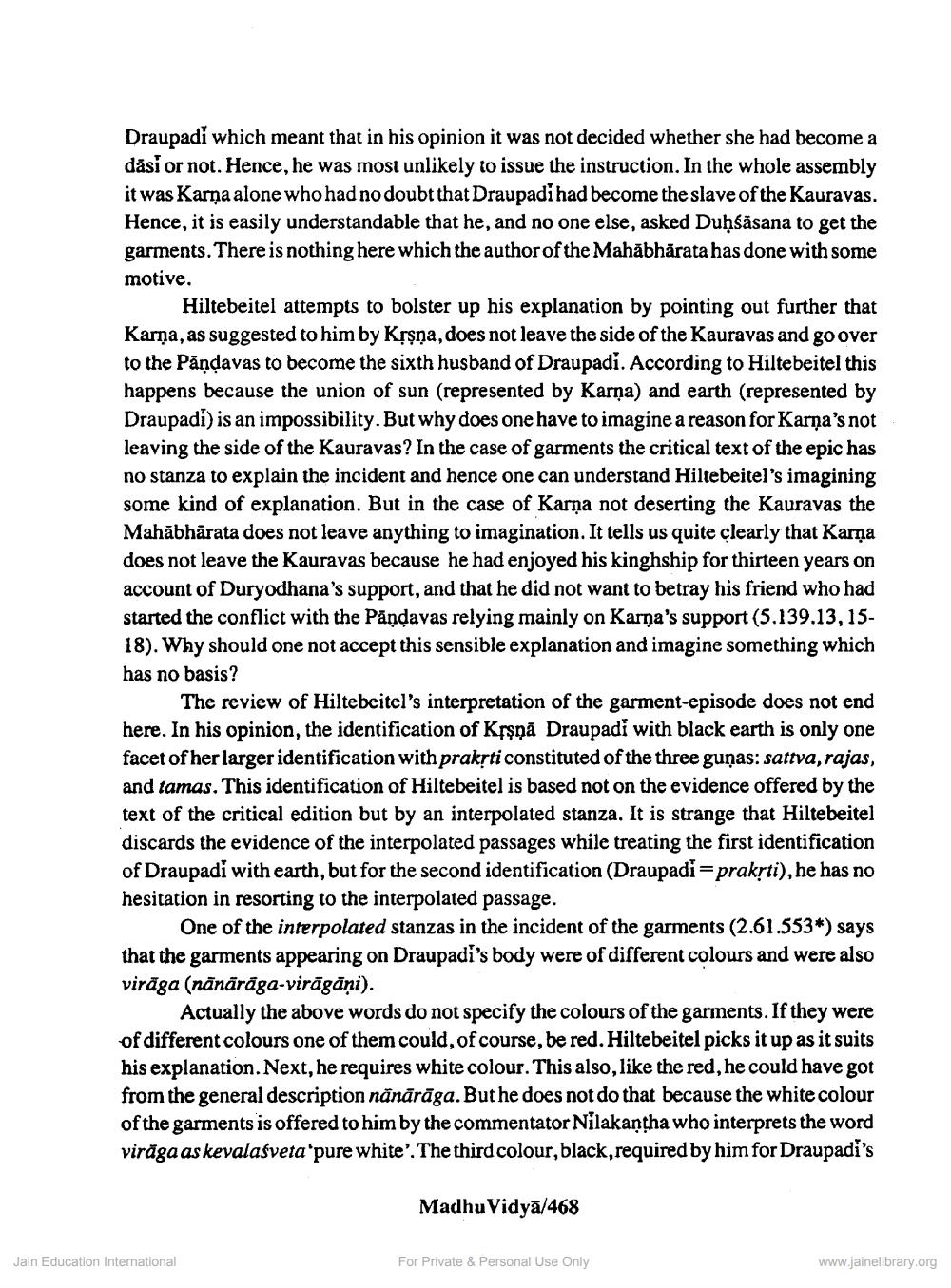________________
Draupadi which meant that in his opinion it was not decided whether she had become a dási or not. Hence, he was most unlikely to issue the instruction. In the whole assembly it was Karņa alone who had no doubt that Draupadi had become the slave of the Kauravas. Hence, it is easily understandable that he, and no one else, asked Duhšāsana to get the garments. There is nothing here which the author of the Mahābhārata has done with some motive.
Hiltebeitel attempts to bolster up his explanation by pointing out further that Karma, as suggested to him by Krşņa, does not leave the side of the Kauravas and go over to the Pandavas to become the sixth husband of Draupadi. According to Hiltebeitel this happens because the union of sun (represented by Karna) and earth (represented by Draupadi) is an impossibility. But why does one have to imagine a reason for Karna's not leaving the side of the Kauravas? In the case of garments the critical text of the epic has no stanza to explain the incident and hence one can understand Hiltebeitel's imagining some kind of explanation. But in the case of Karna not deserting the Kauravas the Mahābharata does not leave anything to imagination. It tells us quite clearly that Karna does not leave the Kauravas because he had enjoyed his kinghship for thirteen years on account of Duryodhana's support, and that he did not want to betray his friend who had started the conflict with the Pandavas relying mainly on Karma's support (5.139.13, 1518). Why should one not accept this sensible explanation and imagine something which has no basis?
The review of Hiltebeitel's interpretation of the garment-episode does not end here. In his opinion, the identification of Krşņā Draupadi with black earth is only one facet of her larger identification with praksti constituted of the three guņas: sattva, rajas, and tamas. This identification of Hiltebeitel is based not on the evidence offered by the text of the critical edition but by an interpolated stanza. It is strange that Hiltebeitel discards the evidence of the interpolated passages while treating the first identification of Draupadi with earth, but for the second identification (Draupadi = prakrti), he has no hesitation in resorting to the interpolated passage.
One of the interpolated stanzas in the incident of the garments (2.61.553*) says that the garments appearing on Draupadi's body were of different colours and were also virāga (nānārāga-virāgāni).
Actually the above words do not specify the colours of the garments. If they were of different colours one of them could, of course, be red. Hiltebeitel picks it up as it suits his explanation. Next, he requires white colour. This also, like the red, he could have got from the general description nänārāga.But he does not do that because the white colour of the garments is offered to him by the commentator Nilakantha who interprets the word virága as kevalasveta'pure white'. The third colour, black,required by him for Draupadi's
Madhu Vidya/468
Jain Education International
For Private & Personal Use Only
www.jainelibrary.org




